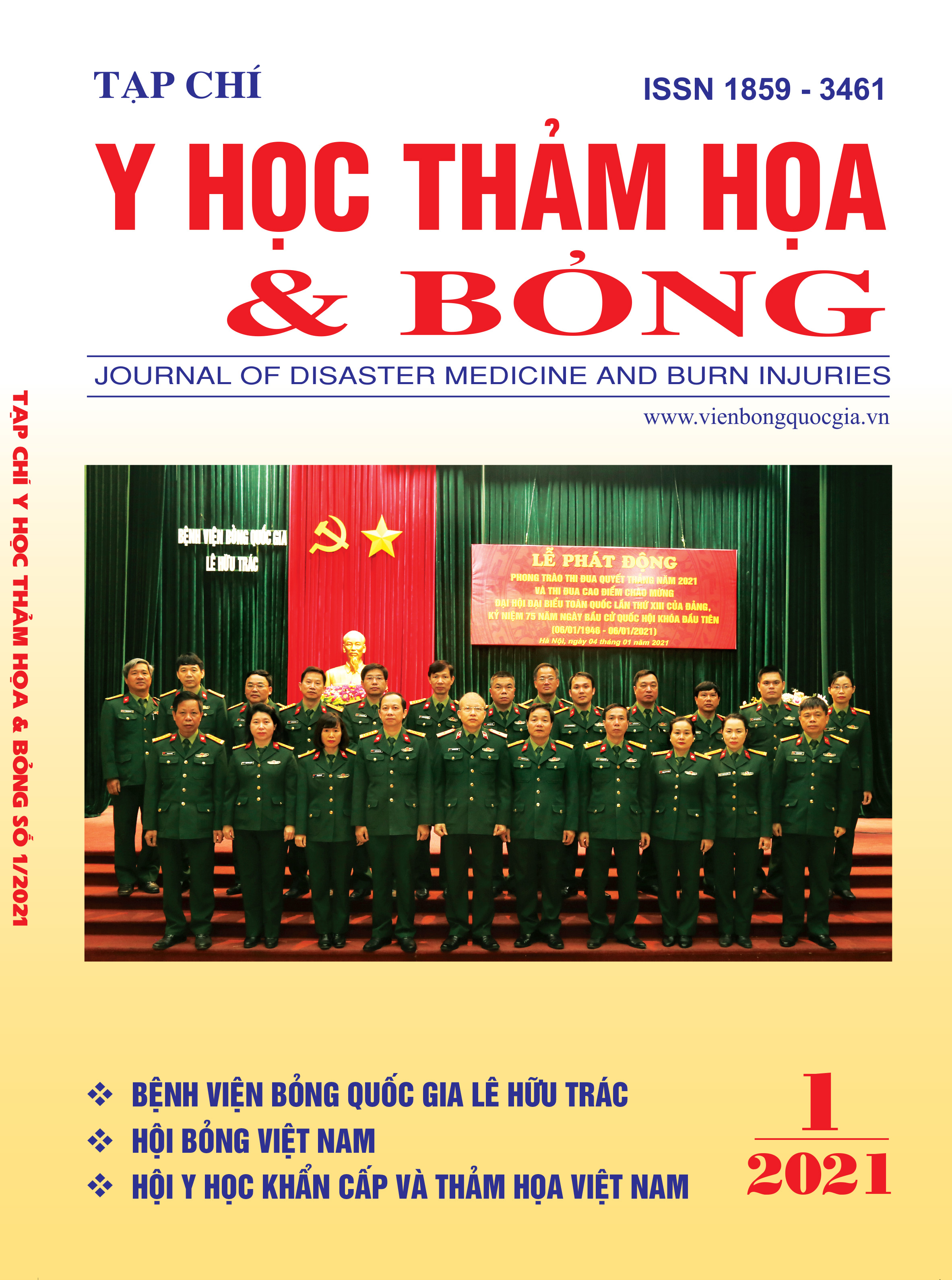Choosing anesthesia method for cesarean section in pregnant burn patients (case report).
Main Article Content
Abstract
Introduction: Burn injuries cause pathological changes that are harmful to both the mother and the fetus. Cases of severe burns, depending on the specific case that needs obstetric interventions, cesarean section to save children and aggressive treatment for the mother. On March 20th, 2020 National Burn Hospital collaborated with the Department of Obstetrics and Gynecology of Military Hospital 103 to make a cesarean section under endotracheal general anesthesia for a 35-week pregnant case suffered from alcohol flame burn on the front trunk, face, upper and lower limbs with total burn surface area of 54% (31%) at the second, third and fourth-degree, burn shock, respiratory inhalation monitoring in the first hour.
Case report: A 35-week pregnant woman suffered from alcohol flame burn at 11 a.m. on March 20th, 2020 admitted to the intensive care unit of National Burn Hospital at 11:30 a.m. on the same day in the state of burn shock, consciousness, sore throat, body temperature 36.60C; heart rate 121bpm; blood pressure 157/126mmHg, spontaneous breathing 25 per minute, SpO2 99%, normal breath sounds on bilateral lung fields, no rales, soft abdomen without diuresis since burns, abdominal pain, no movement of the fetus, no abnormal vaginal bleeding. Local injury included the front trunk, face, upper and lower limbs with a total burn surface area of 54% (31%) at the second, third, fourth degree. At 4 p.m. on the same day, the pregnant case was made a cesarean section under endotracheal general anesthesia.
Conclusion: Endotracheal general anesthesia for cesarean section in burn shock pregnant case is a more sensible method of anesthesia than regional anesthesia, but should be ready resuscitation for infants.
Article Details
Keywords
Endotracheal general anesthesia, cesarean section, burn pregnant case
References
2. Bộ môn gây mê hồi sức trường đại học y Hà nội (2006), Gây mê mổ lấy thai, Bài giảng gây mê hồi sức dùng cho đại học và sau đại học tập II, Nhà xuất bản y học, Hà nội, trang 274-298
3. Wilton C. Levine (2010), Handbook of Clinical Anesthesia Procedures of the Massachusetts General Hospital, eighth edition, Lippincott Williams & Wilkins, Philadelphia, USA, p.478-534


